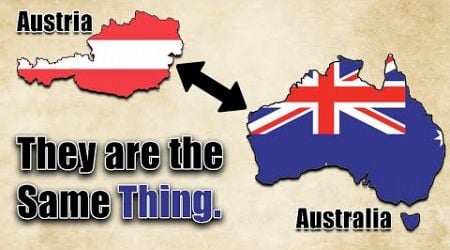Austria VAT Guide for E-Commerce & Cross-Border Sales
Austria is a highly appealing market for e-commerce sellers, particularly due to its strong online purchasing culture and integration within the European Union. However, understanding and complying with Austria’s Value-Added Tax (VAT) regulations is


Austria is a highly appealing market for e-commerce sellers, particularly due to its strong online purchasing culture and integration within the European Union. However, understanding and complying with Austria’s Value-Added Tax (VAT) regulations is essential for both local and cross-border e-commerce sellers. In this guide, we’ll cover the basics of VAT in Austria, how it affects e-commerce, and key tips for compliance, especially when selling across borders.
1. What is VAT and Why Does It Matter for E-Commerce?
VAT, or Value-Added Tax, is a consumption tax applied to goods and services sold within the EU, including Austria. This tax is levied at each stage of the production and distribution chain, which eventually gets passed on to the end consumer. For e-commerce businesses, VAT compliance is crucial because it directly affects pricing, competitiveness, and the overall customer experience. Non-compliance with VAT regulations can lead to fines, legal issues, and reputation damage.
In Austria, VAT rates vary depending on the type of product or service being sold. The standard VAT rate is 20%, but reduced rates of 10% and 13% apply to specific items, including food, books, and cultural services. Understanding which VAT rate applies to your products is essential for proper pricing and compliance.
2. VAT Registration Requirements for E-Commerce Sellers
For e-commerce sellers, VAT registration is often one of the first legal steps required before operating in Austria. Whether you’re based in Austria or selling to Austrian customers from another EU or non-EU country, there are conditions under which VAT registration becomes mandatory:
- Domestic Sellers: Austrian-based businesses selling goods or services locally or cross-border must register for VAT.
- EU-Based Sellers: If you’re an EU-based seller with total cross-border sales exceeding the €10,000 EU-wide threshold, you must register for VAT in Austria. Alternatively, you may use the EU’s One-Stop-Shop (OSS) scheme to simplify VAT reporting across multiple EU countries.
- Non-EU Sellers: Non-EU sellers shipping to Austria must register for VAT regardless of the sales threshold. They can choose to register directly in Austria or use an intermediary to handle VAT obligations.
After registering, sellers receive a VAT number, which must be displayed on invoices, e-commerce websites, and in all official communications to comply with Austrian and EU regulations.
3. Calculating VAT for Austrian E-Commerce Sales
For e-commerce transactions in Austria, VAT is charged based on the “destination principle,” meaning VAT is applied according to the location of the customer. This means that if you’re selling to an Austrian customer, Austrian VAT rates apply, even if you’re based outside Austria.
Here’s a quick example of how VAT would be calculated for an Austrian sale:
- Determine Product Price: If your product costs €100 and qualifies for the standard VAT rate of 20%, the final price with VAT included would be €120.
- VAT Breakdown: Clearly display the VAT amount (€20 in this case) to the customer. Transparency about VAT charges fosters customer trust and ensures compliance with Austrian regulations.
4. Simplifying Compliance with the One-Stop-Shop (OSS) Scheme
The EU’s One-Stop-Shop (OSS) scheme, introduced in 2021, is a valuable tool for e-commerce sellers across Europe. It simplifies VAT reporting for cross-border sales within the EU, allowing businesses to file a single VAT return for all EU countries rather than registering in each member state.
Benefits of OSS:
- Simplified Reporting: File one VAT return that includes sales in all participating EU countries.
- Single Payment System: Pay VAT to your home country’s tax authority, which then distributes the taxes to relevant countries.
- Applicable to B2C Sales: OSS is exclusively for business-to-consumer (B2C) sales, making it especially beneficial for e-commerce businesses targeting EU customers.
For businesses registered under OSS, sales to Austrian consumers are reported through the OSS system, ensuring that Austrian VAT is automatically included and remitted appropriately. This makes it easier to expand into Austria and other EU countries while maintaining VAT compliance.
5. Import VAT for Non-EU E-Commerce Sellers
For non-EU sellers, importing goods to Austria means dealing with Import VAT. Austria requires VAT on imported goods valued above €150, charged at the point of import. If you’re a non-EU e-commerce business selling directly to Austrian customers, you have two options:
- Direct Registration: Register for VAT in Austria and handle all VAT filings locally.
- Appoint an Intermediary: Engage a VAT intermediary who will manage the VAT obligations on your behalf, ideal for non-EU sellers who want to avoid direct registration.
Additionally, the EU’s Import One-Stop-Shop (IOSS) scheme can help non-EU sellers streamline Import VAT. IOSS applies to goods valued at €150 or less, enabling non-EU businesses to collect VAT at the point of sale and remit it through IOSS, allowing for faster delivery and a smoother customer experience.
6. Managing VAT Invoices and Record-Keeping
Austrian VAT regulations require detailed record-keeping and transparent invoicing, which are essential for audits and compliance checks. When issuing invoices to Austrian customers, be sure to include:
- Seller and Customer Information: Business name, address, VAT number, and customer details.
- VAT Rate and Amount: Clearly state the VAT rate (e.g., 20%) and VAT amount for transparency.
- Invoice Number: Sequentially numbered invoices help maintain order and comply with record-keeping standards.
Keep records of all transactions, invoices, and VAT returns for at least seven years, as Austrian authorities may conduct audits to verify compliance. Leveraging accounting software tailored to VAT regulations can streamline record-keeping and simplify compliance management.
7. VAT Exemptions and Reduced Rates
Austria, like other EU countries, has VAT exemptions and reduced rates for certain goods and services. The standard VAT rate is 20%, but reduced rates of 10% and 13% apply to specific categories, including:
- Books and Periodicals: Printed books, newspapers, and digital publications benefit from a reduced 10% VAT rate.
- Certain Food and Beverages: Basic food items may qualify for a 10% VAT rate.
- Art and Culture: Admission to cultural events, museums, and theaters may be taxed at 13%.
Understanding these reduced rates and exemptions can help you price products competitively and ensure compliance.
8. Common VAT Challenges for Cross-Border Sellers
Cross-border e-commerce can present several VAT challenges, including:
- Currency Fluctuations: Ensure pricing is accurate after currency conversion to avoid issues with VAT calculations.
- Threshold Compliance: Monitor sales thresholds to avoid unintentional non-compliance, especially if sales increase significantly.
- Complex Returns: Implement a clear returns policy to handle refunds and VAT adjustments efficiently.
Investing in tax software or consulting a VAT specialist can help minimize these challenges, ensuring smoother VAT compliance as your business expands across borders.
9. Staying Updated on VAT Changes
Austrian and EU VAT regulations evolve regularly to accommodate the growing e-commerce market. Staying informed about changes, such as new VAT rates, thresholds, or updated schemes, is essential for long-term compliance. Signing up for updates from the Austrian tax authority or consulting with VAT experts periodically can help your business stay up-to-date with regulatory shifts.
Navigating Austria’s VAT regulations is essential for e-commerce and cross-border sellers aiming to succeed in this competitive market. From understanding VAT registration and Tax and the destination principle to leveraging OSS and IOSS schemes, each step is vital for staying compliant. As Austria’s digital market continues to grow, establishing a solid VAT compliance framework will position your business for long-term success and enhance customer trust. By following this guide, e-commerce sellers with co-working spaces can also unlock the potential of Austria’s online marketplace with confidence.


































